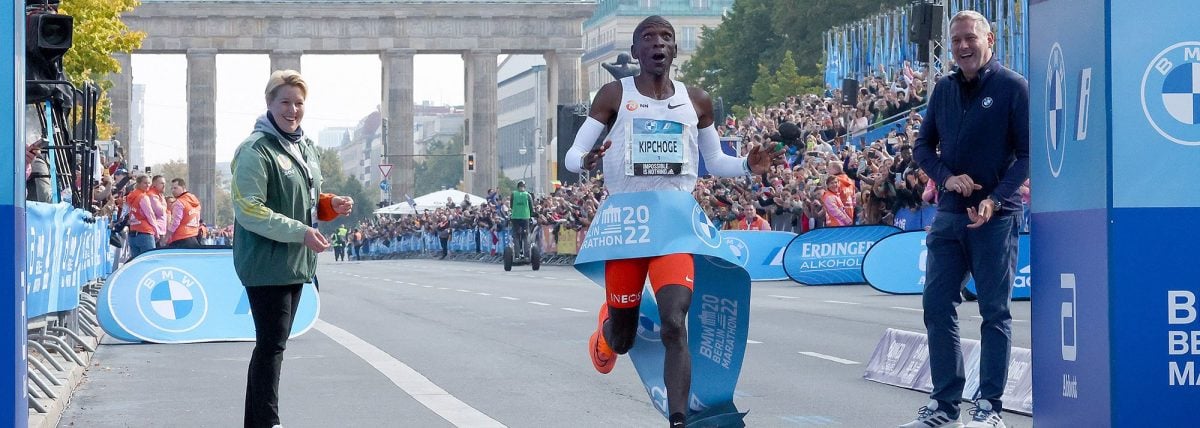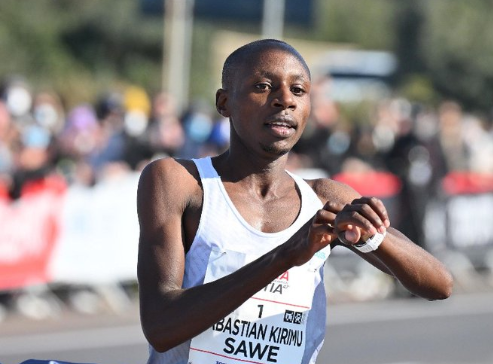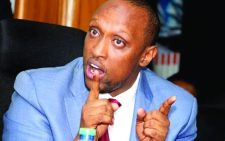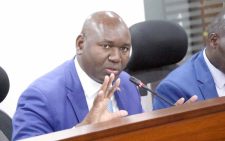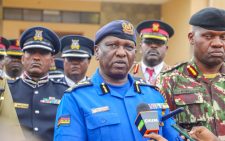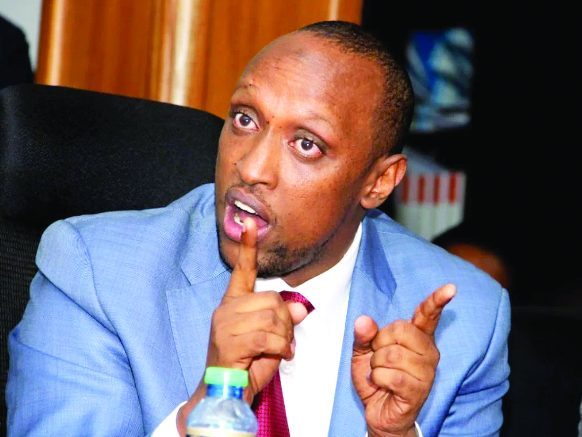Here is the inside story of how Eliud Kipchoge made sporting history during INEOS 1:59 Challenge
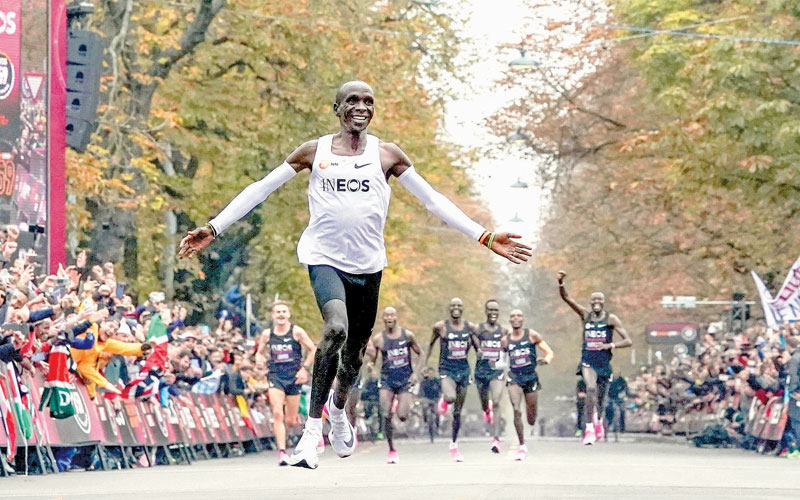
London, Tuesday
A week before the big day, in the middle of the night, Eliud Kipchoge was fast asleep at his training base in the hills of Kenya.
The greatest male distance runner of all time would soon be launching his second attempt at making history, at becoming the first person to run a marathon in under two hours. All his preparations had gone to plan.
But 3,500 miles away in Austria, American scientist Robby Ketchell was woken by a nightmare at 3am. He was so unsettled that he jumped out of bed and hotfooted it 3km across Vienna.
Ketchell was desperate to check nobody was trespassing on a small roundabout that had been his second home for the past two weeks. For the next four hours until sunrise, he kept a one-man watch over this hump in the road – a pivotal piece in the complicated jigsaw of Kipchoge’s 1:59 Challenge.
Why? As a data scientist Ketchell has helped Team Ineos (formerly Team Sky) win three Tours de France. He is a man well schooled in sport’s one percent advantages – the so-called marginal gains.
The roundabout was a three percenter. The presence of a historic building in its centre meant that the road had been designed with a -2 per cent camber.
Good for taking rainwater away from a tourist attraction, terrible for a marathon runner trying to make an about turn while travelling at 13mph.
Ketchell’s solution was to dig up the roundabout and start again, turning the -2% camber into a +1% one. His design took two weeks for local workers to complete – “they thought I was nuts” – before it was undone and returned to normal 12 days later.
How it started
On the face of it, running is one of the purest and simplest sports on the planet. Kipchoge’s sub two-hour marathon was anything but. For Sir Dave Brailsford, the story began during the first week of May’s Giro d’Italia.
By day Team Ineos’ cycling boss was making sure the first Grand Tour since a switch from Sky’s backing went smoothly. By night he was studying into the small hours, learning as much as he could about marathon running.
“It was a real deep dive,” he says. “This sounds a bit geekish but I read quite a lot about how you can educate yourself quickly and learn fast.”
A month earlier, Brailsford had been asked by his new boss, Ineos chief executive and Britain’s richest person Jim Ratcliffe, whether he would take on a role as CEO of Kipchoge’s attempt.
Taking on such a massive project (between 300-400 people worked on it) during a hectic summer of professional cycling would have been a lot for anyone. But Brailsford also had another issue to contend with far closer to home.
“I found out that I’d got cancer around March, which I wasn’t expecting,” he says.
And so, with the help of a self-help journal he penned along the way, Brailsford agreed to take on a workload that he now acknowledges was absurd.
“I worked really, really hard on it from April time onwards. Through June, through the Tour de France,” he says.
Back in Kenya, Kipchoge was beginning a journal of his own -a training log for the biggest challenge of his life. In it was absolutely nothing new.
The 34-year-old’s methods are notoriously simple and humble. Despite his multi-millionaire status, for nearly 300 days a year he lives and trains away from his wife and three children at a training centre in Kaptagat, a tiny village in the Kenyan highlands.
He is known as the “boss man” by his running partners but that doesn’t stop him cleaning the toilets or doing his share of the daily chores. He lives by the mantra: “Living simply sets you free.”
For the 1:59 Challenge team, the biggest question was: Which athlete could produce a modern-day Roger Bannister moment?
The answer was a total no-brainer. Only one: Eliud Kipchoge. The undisputed GOAT of marathon running. The world record holder, Olympic champion and winner of 11 of his 12 marathon races. And, more crucially, the man with experience of the incredible individual pressure that comes with running a specially organised marathon whose sole focus is to go where no-one has gone before.
Monza experience
In May 2017, the Nike-organised Breaking2 event saw Kipchoge take on the two-hour mark for the first time. Back then, to run under two hours he was looking at taking over three minutes off his personal best. A stratospheric leap. He ran 2:00:25.
Kipchoge is also a fan of the phrase ‘no human is limited’. But in the build-up to Breaking2—held at Monza’s historic race track in Italy—he now admits he was struggling to practise what he preached.
“Eliud was training physically but he also had to spend seven months convincing his mind that it was possible,” long-time manager Valentijn Trouw says. “Before Vienna he didn’t need to do that. That mental change was the biggest win from two years ago.”
The real question for Brailsford, Ketchell and many others was: How could they help? First of all, they set out to find the perfect venue. It had to be within three time zones of Kenya (to limit the effects of jetlag on Kipchoge) and atmospheric conditions had to be ideal. Temperature: between 7C and 14C. Humidity: below 80%. Wind: less than 2m/s. Precipitation: none.
With a date in mid-October non-negotiable, Ketchell, as he casually throws into conversation now, “wrote a quick computer script” to find the best location.
London was briefly considered before the weather was judged too unpredictable. A return to a racing circuit was also toyed with, but Germany’s Lausitzring was quickly ruled out after a car crash of a recce.
One of Kipchoge’s biggest complaints about the Breaking2 attempt was the lack of crowds. The search continued, and in early June, the planning team arrived in Vienna, specifically a tree-lined road called the Hauptallee that runs through Prater Park. It was love at first sight.
Vienna offered the right temperature, humidity and rainfall (or lack thereof) in October. That local authorities did not baulk at a complex list of demands was another huge boost. The Hauptallee and its surrounding area would be closed off for two whole weeks, so the attempt could be made on the optimum day to run.
Wind challenge
But for Ketchell, the wind was the biggest battleground.
Within days of finalising Vienna as their choice, the team installed sensors along the Hauptallee, a 4.4 km long avenue, to monitor conditions. What they consistently found was incredibly exciting to Ketchell, a wind speed of less than 1m/s. Excellent conditions.
Yet even still, Ketchell was not satisfied. Drawing on his extensive knowledge of aerodynamics from a career in professional cycling, he set about finding a way to limit the wind’s impact even further. He did this by devising a plan to arrange Kipchoge’s 41 rotating pacemakers, a number that included Olympic 1,500m champion Matthew Centrowitz and Norwegian wonderkid Jakob Ingebrigtsen.
Ketchell used another computer programme to explore the benefits of more than 100 possible formations in which they could run. Eventually they came up with the optimal shape. Even for the combined cycling brainpower of Brailsford and Ketchell it was something new, an inverted V. Think Mighty Ducks only the other way around.“It is actually the inverse of how birds fly,” Ketchell says. “From the best of my knowledge it is not used in any other sport, industry or animal world.” A few metres ahead of Kipchoge was a car that could adjust its speed to within 0.1 kmh. It had lasers to let him and the pacers know they were on target.
But arguably more important to Kipchoge was the man alongside him using pedal power to stay by his side throughout the full 26.2 miles. That man was Kipchoge’s manager Trouw.
Trouw hails from the Netherlands. He worked for an insurance company and coached ice skating before joining the sports agency Global Sports Communication. He has been a trusted confidant of Kipchoge ever since he began working with him in 2003.
The pair had breakfast together on the morning of the attempt, “Eliud had oatmeal with banana and honey, it’s his treat on race day, the only time he eats it”, and were inseparable during the marathon itself.
Trouw was there, pedalling alongside Kipchoge, a task made more difficult than it sounds by the phalanx of pacemakers around him.
“What running is to the Kenyan people, cycling is to the Dutch,” he says.
As well as handing over water bottles, when you watch the race footage it appears like the Dutchman is delivering high-tech advice from a laptop mounted to his handlebars. Trouw’s human touch means he is also in tune with another of the intangibles that helped propel Kipchoge towards making history on 12 October. The impact of the crowd.
Spending time in the company of Kipchoge is a serene experience. Except when you mention his shoes, more of which later.
It is difficult to imagine him complaining about anything, but the sparse crowds at the Breaking2 project in Monza was a source of frustration.
There was no such issue in Vienna and Trouw is convinced it was a factor in Kipchoge making history.
Impact of fans
“New asphalt (on the roundabout) is nice and makes a huge difference of course but the crowd (an estimated 120,000 people lined the route) was also an energy that you can’t measure,” he says.
When he went on his morning run at 7am every day in Vienna, there were people waiting for autographs who had travelled from Ecuador, Colombia, all over the world.
One person said to him: “I really hope the attempt is on Saturday because I can’t afford to stay any longer.” Those interactions make a difference.
Such attention to detail appealed to Kipchoge.
He spent much of race week relaxing in his room reading a self-help book called First Things First.
“It’s about getting your priorities right,” he says, speaking on the phone from his home in Kenya.
Kipchoge’s priority in Vienna was to run under two hours, whatever it took. That singular ambition causes him to bristle when I bring up the post-race fall-out over his new Nike trainers.
Kipchoge’s record-breaking run was one part of a marathon masterclass over that October weekend which also featured his compatriot Brigid Kosgei breaking Paula Radcliffe’s women’s marathon world record by 81 seconds in Chicago.
The common denominator in both those records? Nike’s Vaporfly Next% shoe.
American Jake Riley also wore the shoes in Chicago and compared the experience to “running on a trampoline”.
“That’s a big lie,” is Kipchoge’s unequivocal response. “The world is moving so you can’t complain.”
The Kenyan is equally combative regarding the juxtaposition between his assertion that “no human is limited” and the matter of Nike’s new trainers costing £240 (Sh31,529). -BBC
